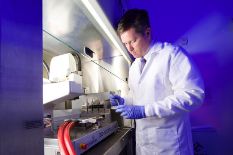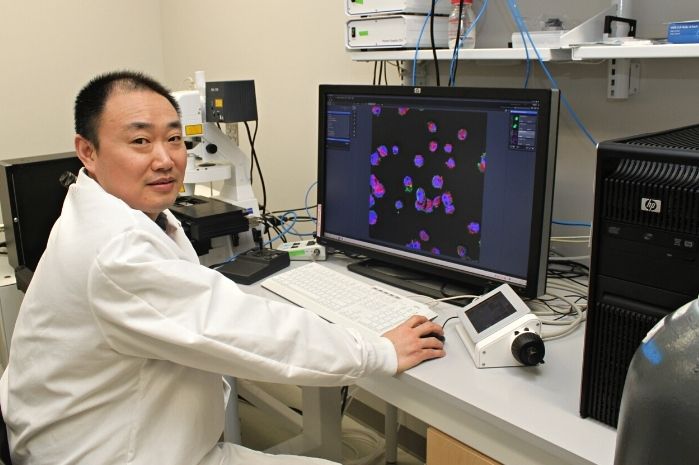 University of Maryland Fischell Department of Bioengineering professor and chair John Fisher is working with the U.S. Food and Drug Administration (FDA) to undertake regulatory research into emerging cardiac electrophysiology medical device technologies and human-induced pluripotent stem cells (hiPSCs) to assess device safety and efficacy.
University of Maryland Fischell Department of Bioengineering professor and chair John Fisher is working with the U.S. Food and Drug Administration (FDA) to undertake regulatory research into emerging cardiac electrophysiology medical device technologies and human-induced pluripotent stem cells (hiPSCs) to assess device safety and efficacy.In recent years, the use of cardiac electrophysiology medical devices – Cardiac Resynchronization Therapy (CRT), Implantable Cardioverter Defibrillator (ICD) and Cardiac Contractility Modulation (CCM) – to treat diseased heart tissue during heart failure has increased. Such technologies have proven critical to reducing mortality and improving patient quality of life. Before these technologies can be used in patients, preclinical bench testing – including large- and small-animal testing strategies – serves a critical role in advancing understanding of device mechanisms and safety. Consequently, novel human-based preclinical models are needed to reduce the burden on animal testing and clinical trials, and hiPSCs have been heralded as a potential solution. To usher this technology into the regulatory setting, the scientific community needs to learn more about 3D-printed culture strategies and identify best practices for the robust generation of such tissues.
 The Fisher Lab is collaborating with Ksenia Blinova, assistant director, and T. K. Feaster, staff fellow, of the Division of Biomedical Physics in the Office of Science and Engineering Labs in the FDA’s Center for Devices and Radiological Health, to establish standardized methods for evaluating cardiac electrophysiology medical devices in human cells at the bench. The research trio is pursuing this work as a National Science Foundation (NSF) Scholars-in-Residence project. They aim to develop new knowledge and testing tools to further timely predictivity of these technologies.
The Fisher Lab is collaborating with Ksenia Blinova, assistant director, and T. K. Feaster, staff fellow, of the Division of Biomedical Physics in the Office of Science and Engineering Labs in the FDA’s Center for Devices and Radiological Health, to establish standardized methods for evaluating cardiac electrophysiology medical devices in human cells at the bench. The research trio is pursuing this work as a National Science Foundation (NSF) Scholars-in-Residence project. They aim to develop new knowledge and testing tools to further timely predictivity of these technologies.
“We have all witnessed remarkable advances in cell adhesion centrifugation (CAC) and hiPSC technology,” said Fisher. “Although useful, the potential for CAC to generate 3D-printed human heart models warrants further investigation. With support from the NSF, the knowledge gained from the UMD-FDA collaboration can help facilitate the development of such models to accelerate and inform the regulatory review process.”
“This collaborative research project is intended to help fill a gap in knowledge and test methods that has become increasingly important in recent years, given the rising level of activity towards cardiac electrophysiology device-based therapy,” said Drs. Blinova and Feaster. “We are very excited to be working together to develop innovative technological approaches with the potential to improve public health.”
The NSF – through its Directorate for Engineering, the Directorate of Computer and Information Science and Engineering Division of Computer and Network Systems, and the Directorate for Mathematical and Physical Sciences Division of Materials Research – along with the FDA – through its Center for Devices and Radiological Health (CDRH) – have established the NSF/FDA Scholar-in-Residence Program at FDA. This program comprises an interagency partnership for the investigation of scientific and engineering issues concerning emerging trends in medical device technology. This partnership is designed to enable investigators in science, engineering, and computer science to develop research collaborations within the intramural research environment at the FDA.
For more information about this project and the NSF/FDA SIR program, contact OSEL_CDRH@fda.hhs.gov.
Published July 30, 2021

 BIOE Professor Xiaoming (Shawn) He
BIOE Professor Xiaoming (Shawn) He